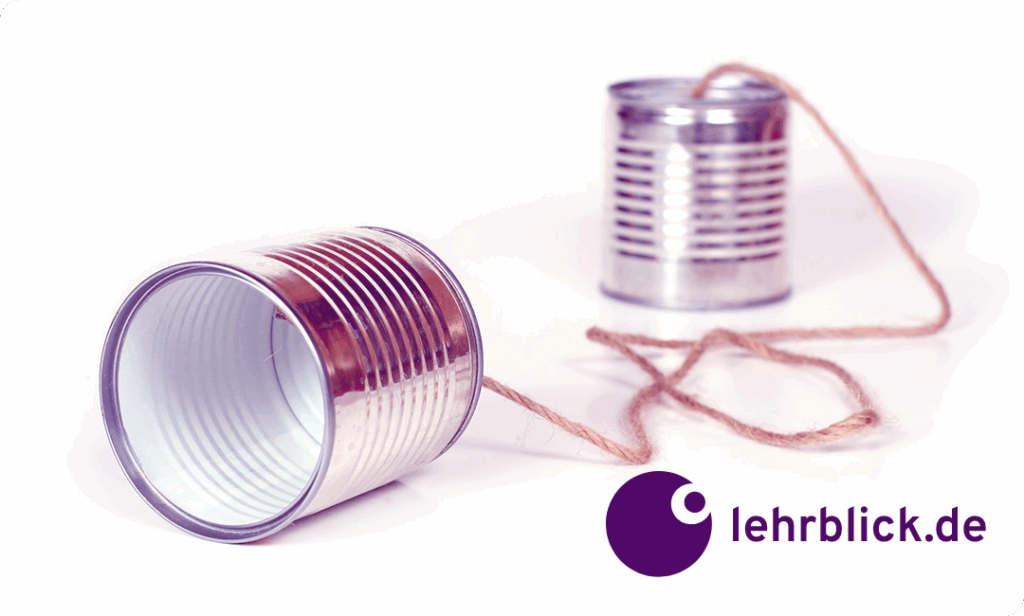The “Gasthörer” podcast with researchers from the University of Regensburg, the science show MAITHINK X with Mai Thi Nguyen-Kim, and the Science Busters’ stage performances: three examples of successful external science communication. What is meant by this is the communication of scientific content to a non-scientific audience. The challenge here lies in presenting complex research findings in a way that is both appealing and easy to understand. However, science communication is not just about passing on information – the goal is also for there to be a dialogue between science and society. What the three examples also show is that the target groups are extremely diverse (Bundesministerium für Bildung und Forschung, 2019).
Science has a responsibility towards society.
Science communication is not just an option but a scientific obligation (Bertemes, 2024; National Academies of Sciences, Engineering, and Medicine, 2017). Scientists have a responsibility to provide evidence-based answers to socially relevant questions and solutions to current social problems. That way, they help citizens to make informed decisions – including with regard to political questions. The general public also has explicit confidence in the ability of science to take this role. In the current edition of the Science Barometer (Wissenschaft im Dialog, 2024), 55% of respondents said that they trusted science and research “completely” or “tended to” trust science and research, primarily because researchers are perceived to be experts in their field (agreement: 67% of respondents). It is not only a question of propagating scientific findings here, but also of strengthening the understanding of scientific methods and possible uncertainties in the findings communicated.
Another reason for scientists to engage in science communication is the dialogue with people who are not specialists in the field. This exchange promotes mutual understanding and – if conducted openly and transparently – can both reinforce the public’s trust in science and help create an objective basis for discussion (Bertemes, 2024). One of the bonuses for researchers is that they receive feedback and appreciation for their work (National Academies of Sciences, Engineering, and Medicine, 2017). This can even go as far as involving citizens in their own research (“citizen research”, see below).
In view of the challenges science communication is currently facing, this responsibility is all the more pressing: the responsibility to (1) actively address false claims that are spreading rapidly on the internet and counter them with content with a sound scientific basis and (2) develop innovative methods of communication in order to anchor science in society in a way that will endure.

The public doesn’t think the same way as your colleagues from the field.
Science communication isn’t rocket science, but neither is it a no-brainer. In the case of a specialist article or lecture, you are addressing a quite well-defined group: a homogeneous group of readers with the relevant prior knowledge who are familiar with science and its inherent characteristics and also with the terminology. With specialist articles, the scientific discourse is expressly included and the readers see nothing unusual in complex, contradictory interpretations and assertions.
The target group of people you would like to reach by means of science communication is very different! The recipients come from very different contexts, and the prior knowledge and target groups, for example, are very heterogeneous. In addition, the recipients may show different degrees of scepticism with regard to scientific information, and some will be able to deal with the idea of uncertainty and contradiction better than others. This makes science communication complex. The one-size-fits-all approach does not apply here (Haan, 2024).
The good news is that there are two basic principles that make the communication and exchange easier if you bear them in mind. Pay attention to dialogue orientation (promoting exchange with the audience and incorporating their feedback into your own scientific work) and transparency, that is, the disclosure of methods, uncertainties and possible conflicts of interest (Federal Ministry of Education and Research, 2019).
Good science communication is feasible.
When communicating with a non-scientific target group, please bear the following two recommendations in mind. (1) Reduce the complexity of the content to be conveyed without simplifying it. Scientific findings are often based on years of research, complex methods and differentiated results. The trick is to simplify them in such a way that they can be understood without the content being incorrect. (2) Use clear, straightforward language that is geared towards the target group: make your sentences short and reduce the density of information in your text. Scientific terminology is precise but often difficult for laypeople to understand. If possible, avoid using technical terms, or explain them carefully. Remember that terms can be understood in different ways. The word “theory”, for example, has a different meaning in day-to-day life than it does in an academic context (Weber, 2024).
Two commonly known teaching concepts also deserve special attention in the external communication of scientific results, processes and methods: storytelling and visualisation. Storytelling has proven an effective tool for embedding complex scientific findings in an understandable and appealing narrative. This makes them tangible and creates personal points of connection (Hans, 2024; Raabe, 2018). Visualisations (e.g. diagrams, maps or simulations) also play a key role in science communication. Well-thought-out graphics illustrate complex connections at a glance, making them easier to understand.
Apart from these basic principles, decisions concerning the five key elements of science communication – topic, target group, goal, medium/format and style – need to be made in each specific case (“NaWik arrow”; Brandt-Bohne, 2021). The following video with Mai Thi Nguyen-Kim explains these dimensions clearly (Subtitles are provided in English):
There are many ways to communicate science.
There are a multitude of channels and formats for science communication. The format or communication channel you ultimately choose depends on the target group, the topic and the goals. Traditional formats like science magazines, for example, reach a different audience than social media channels. Podcasts particularly lend themselves to in-depth explanations, while short videos on TikTok or Instagram appeal to younger target groups. We present the most common formats below (Dernbach, Kleinert & Münder, 2012; Wissenschaftskommunikation, n.d.).
- Traditional media: For decades, there have been science topics published in newspapers and magazines (often in the form of a separate science section) and science programmes broadcast on the radio and television. They reach a wide audience and are a good way of communicating research findings to the general public.
- Digital media: Blogs, podcasts and social media platforms (e.g. YouTube, TikTok, Instagram, Snapchat or LinkedIn) enable specific target groups to be addressed directly and provide interactive formats. Blogs tend to be read by smaller groups of people with an interest and by those who come across them when using search engines to look for information. Social networks enable participation (e.g. via the “comment” function) and the rapid propagation of scientific information using the “share” function.
- Events: Well-known formats like science festivals, lectures, talks, workshops and the “Long Night of the Sciences”, but also innovative formats like science slams or science theatre offer the opportunity for direct exchange between researchers and the public.
- Real places: Real places are places where “science, politics, business and citizens can discuss the opportunities and challenges of scientific developments and develop ideas for shaping the future” (Federal Ministry of Education and Research, 2019, p. 4). Well-known institutions include the Leibniz research museums, Futurium, science shops and houses of science.
- Citizen research: These are projects in which citizens are actively involved in research processes, like “butterfly monitoring”, for example. These projects foster an understanding of scientific methods and strengthen the link between science and society.
On the portal wissenschaftskommunikation.de you can find a database containing more than 110 entries, in which you can make a targeted search for suitable formats for your specific communication project according to target group and format type. It includes both well-known and innovative formats, from A for “Adults-only science night” to Y for “YouTube”. For each format, there are detailed instructions for implementation, concrete examples of implementation and further information.
What format have you already had a good experience with? What didn’t work so well? Share your experiences on our LinkedIn channel.
References
Bertemes, J.-P. (2024). Science with and for society. In J.-P. Bertemes, S. Haan & D. Hans (Hrsg.), 50 essentials on science communication (S. 14–15). De Gruyter Mouton. https://doi.org/10.1515/9783110763577
Brandt-Bohne, U. (2021, 25. Mai). Die zentralen fünf Dimensionen der Wissenschaftskommunikation. https://www.wissenschaftskommunikation.de/die-zentralen-fuenf-dimensionen-der-wissenschaftskommunikation-48385/
Bundesministerium für Bildung und Forschung (2019). Grundsatzpapier des Bundesministeriums für Bildung und Forschung zur Wissenschaftskommunikation. https://www.bmbf.de/SharedDocs/Publikationen/DE/1/24784_Grundsatzpapier_zur_Wissenschaftskommunikation.pdf?__blob=publicationFile&v=5
Dernbach, B., Kleinert, C., & Münder, H. (Hrsg.). (2012). Handbuch Wissenschaftskommunikation. VS Verlag für Sozialwissenschaften. https://doi.org/10.1007/978-3-531-18927-7
Haan, S. (2024). Target groups of science communication. In J.-P. Bertemes, S. Haan & D. Hans (Hrsg.), 50 essentials on science communication (S. 40–41). De Gruyter Mouton. https://doi.org/10.1515/9783110763577
Hans, D. (2024). Ingredients of a good story. In J.-P. Bertemes, S. Haan & D. Hans (Hrsg.), 50 essentials on science communication (S. 58–59). De Gruyter Mouton. https://doi.org/10.1515/9783110763577
National Academies of Sciences, Engineering, and Medicine (2017). Communicating Science Effectively: A Research Agenda. Washington, DC: The National Academies Press. https://doi.org/10.17226/23674
Raabe, K. (2018, 6. August). Forscher auf der Heldenreise – Wissenschaft spannend erzählen. Wissenschaftskommunikation.de. https://www.wissenschaftskommunikation.de/forscher-auf-der-heldenreise-wissenschaft-spannend-erzaehlen-16995/
Weber, M. (2024). Language and simplification. In J.-P. Bertemes, S. Haan & D. Hans (Hrsg.), 50 essentials on science communication (S. 60–61). De Gruyter Mouton. https://doi.org/10.1515/9783110763577
Wissenschaft im Dialog (2024). Wissenschaftsbarometer 2024. https://wissenschaft-im-dialog.de/documents/332/2024_Wissenschaftsbarometer_Broschuere_web.pdf
Wissenschaftskommunikation. (o. D.). In Wikipedia. Abgerufen am 12. Juni 2025, von https://de.wikipedia.org/wiki/Wissenschaftskommunikation
Suggestion of citation for this blog post
Bachmaier, R. (2025, June 19)Science communication: Connection between research and society. Lehrblick – ZHW Uni Regensburg. https://doi.org/10.5283/ZHW.20250619.EN

Regine Bachmaier
Dr. Regine Bachmaier is a research associate at the Centre for University and Academic Teaching (ZHW) at the University of Regensburg. She supports teachers in the field of “digital teaching”, among other things, through workshops and individual counseling. In addition, she tries to keep up to date with the latest developments in the field of “digital teaching” and pass them on.





